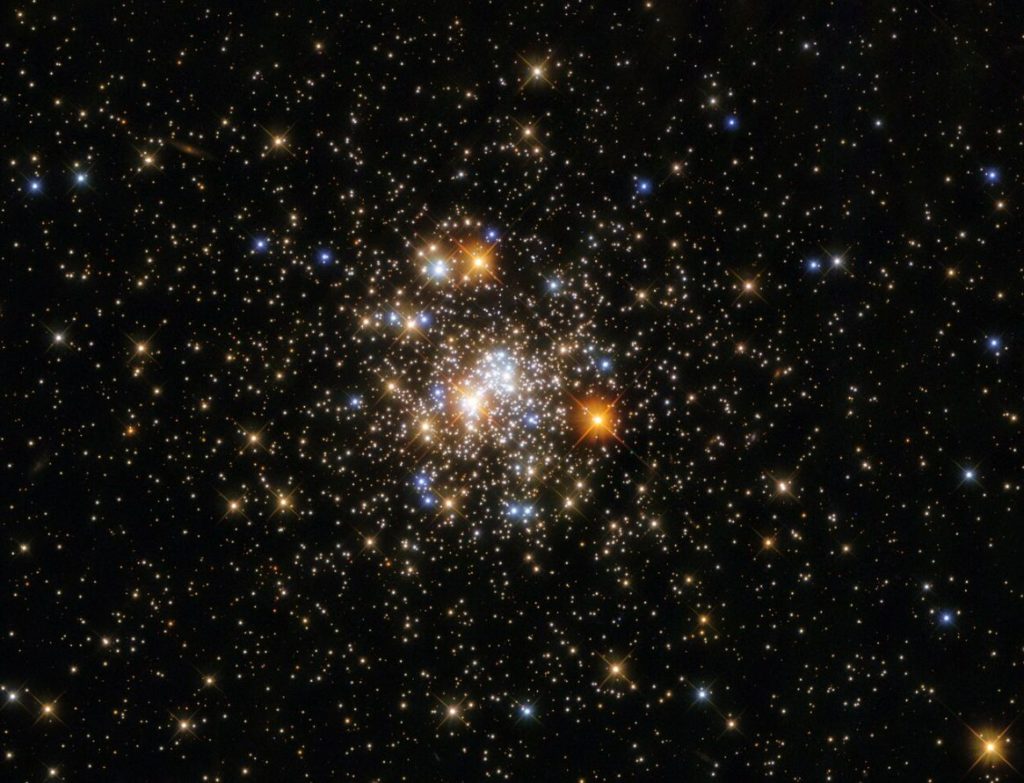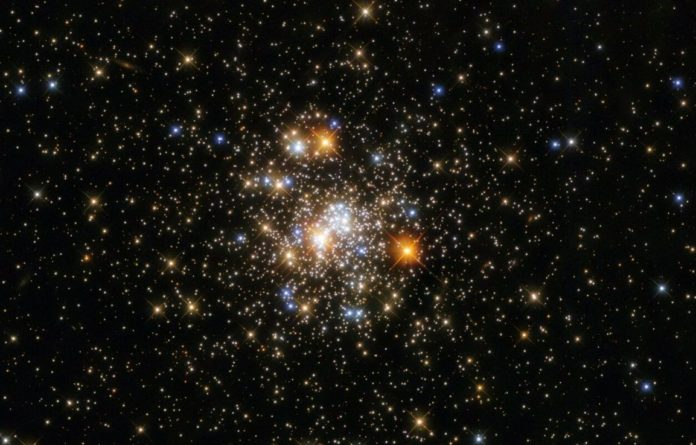This constellation was discovered on August 7, 1784 by the German-born astronomer Friedrich Wilhelm Herschel.
This star-studded image from the Hubble Space Telescope shows NGC 6717, a galaxy located in the constellation Sagittarius more than 20 000 light-years from Earth.
NGC 6717 is a globular cluster, which is a roughly spherical collection of stars that are gravitationally bonded together. As this image reveals, globular clusters contain more stars in their centres than on their outer fringes; the thinly populated borders of NGC 6717 contrast sharply with the glittering concentration of stars in its centre.
Additionally, the image’s centre contains several intruders from closer to home. Close to Earth, bright foreground stars are encircled by crisscross diffraction spikes caused by starlight interacting with the structures supporting Hubble’s secondary mirror.

The night sky region including the constellation Sagittarius also contains the Milky Way’s centre, which is densely packed with light-absorbing gas and dust. This light absorption — referred to as extinction by astronomers — complicates the task of analysing globular clusters around the Galactic centre.
Astronomers used a combination of Hubble’s Wide Field Camera 3 and the Advanced Camera for Surveys to establish the characteristics of NGC 6717.
